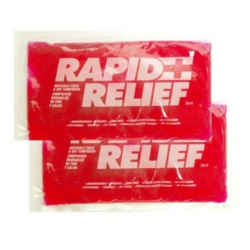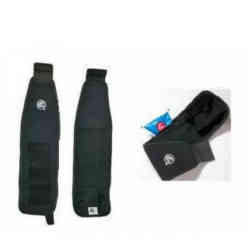Cold is one the most commonly used elements for treating and preventing muscular pain and inflammation of the joints and soft tissue.
After surgery, in cases of soft tissue injuries: tendonitis and muscle injuries, the application of cold reduces pain, prevents the formation of excess inflammation and helps to resolve it if it has already set in.
 There are several studies that address the efficacy of using cryotherapy in its different forms: applying ice, instant cold bags for single use, cold packs, neoprene devices for using with cold packs or crushed ice, immersion in cold water with ice cubes ...
There are several studies that address the efficacy of using cryotherapy in its different forms: applying ice, instant cold bags for single use, cold packs, neoprene devices for using with cold packs or crushed ice, immersion in cold water with ice cubes ...
They all have their advantages and disadvantages.
The techniques that use ice directly, or immersion in cold water, are problematic because they wet the animal’s skin and transmit too much moisture to the animal’s body, along with the freezing water that is touching the animal’s skin which can produce burns or irritations, in humans it is always recommended to place a cloth between the patient’s skin and the ice.
Sometimes in dogs we believe that their coat is enough, however we can encounter problems with very cold water that is just barely touching the dog’s skin. Therefore it is best to avoid direct contact.
There is very expensive “dry ice” equipment, which are machines that emit very cold air and are used in human rehabilitation centers, especially in sport centers, they clearly lower the temperature of the tissue without moistening the skin and without creating humidity or irritation. The dog’s skin can be an impediment for the penetration of the cold in these types of devices; this factor along with the high price causes this technique to be used very infrequently in dogs.
 The fastening system is another important factor; there are well designed fastening systems on the market that provide the dog with certain mobility without falling in the ice, the use of belts or other more advanced fastening systems is highly recommended as we can guarantee the close contact of the ice with the dog’s skin and this contact is going to last throughout the duration of the treatment.
The fastening system is another important factor; there are well designed fastening systems on the market that provide the dog with certain mobility without falling in the ice, the use of belts or other more advanced fastening systems is highly recommended as we can guarantee the close contact of the ice with the dog’s skin and this contact is going to last throughout the duration of the treatment.
The estimated treatment time should be between 15 and 20 minutes, the most recent studies recommend these times given that they allow tissue of a certain depth to remain at a specific temperature, such as the joint capsule in the knee at a temperature of 15ºC, which is considered to be therapeutic. The knee is a joint where precisely more ice can be used as a treatment system and a support that holds the ice to the knee can help us to be more effective. If the internal tissue does not fall to 15ºC we are not making the most of the advantages cryotherapy has to offer.
The latest development in cryotherapy treatment is combining it with compression and, most recently, alternating the compression. There is only one machine on the market that facilitates the two components, cryotherapy and intermittent compression in a single device, the cold and compression therapy system.
www.ortocanis.com

